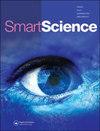Aspects of Downstream Bed Sill Location for Investigating the Countermeasure with Local Scour around Cylindrical Bridge Piers
IF 1.4
Q2 MULTIDISCIPLINARY SCIENCES
引用次数: 1
Abstract
ABSTRACT The countermeasures versus local scour around bridge piers are essential for safe bridge hydraulic design. In this study, laboratory experiments were conducted to investigate the effectiveness of downstream bed sill location as countermeasure method to decrease the local scour under clear water conditions for single cylindrical pier. Four flow intensities were tested (from 0.48 to 0.96 of the threshold velocity of sediment) with five different bed sill locations (from 0 to 4 pier diameter). The measured scour depths were compared with that observed at the exposed pier (four tests for unprotected pier) to estimate the percentage reduction in scour depth for each flow intensity and to assess the aspects of bed sill location. The results revealed a significant effect of bed sill location on decreasing the scour depth with in downstream distance equal to pier diameter. Accordingly, the percentage decrease in scour depth was ranged from 4 to 30%. New empirical formula has been proposed to estimate scour depth near circular bridge piers according to different bed sill configuration. Graphical abstract圆柱桥墩周边局部冲刷对策研究中的下游基位定位问题
桥墩周围局部冲刷对策是桥梁水力安全设计的重要内容。本研究通过室内试验,探讨了在清水条件下,采用下游床基布置作为减少单柱墩局部冲刷的对策方法的有效性。在5个不同的床基位置(从0到4墩直径)测试了4种流动强度(从0.48到0.96的泥沙阈值速度)。将测量的冲刷深度与在暴露墩(无保护墩的四次试验)观察到的冲刷深度进行比较,以估计每种流动强度下冲刷深度减少的百分比,并评估床基位置的各个方面。结果表明,当下游距离等于桥墩直径时,坝基位置对减小冲刷深度有显著影响。相应的,冲刷深度减小的百分比在4% ~ 30%之间。提出了一种新的估算圆形桥墩附近冲刷深度的经验公式。图形抽象
本文章由计算机程序翻译,如有差异,请以英文原文为准。
求助全文
约1分钟内获得全文
求助全文
来源期刊

Smart Science
Engineering-Engineering (all)
CiteScore
4.70
自引率
4.30%
发文量
21
期刊介绍:
Smart Science (ISSN 2308-0477) is an international, peer-reviewed journal that publishes significant original scientific researches, and reviews and analyses of current research and science policy. We welcome submissions of high quality papers from all fields of science and from any source. Articles of an interdisciplinary nature are particularly welcomed. Smart Science aims to be among the top multidisciplinary journals covering a broad spectrum of smart topics in the fields of materials science, chemistry, physics, engineering, medicine, and biology. Smart Science is currently focusing on the topics of Smart Manufacturing (CPS, IoT and AI) for Industry 4.0, Smart Energy and Smart Chemistry and Materials. Other specific research areas covered by the journal include, but are not limited to: 1. Smart Science in the Future 2. Smart Manufacturing: -Cyber-Physical System (CPS) -Internet of Things (IoT) and Internet of Brain (IoB) -Artificial Intelligence -Smart Computing -Smart Design/Machine -Smart Sensing -Smart Information and Networks 3. Smart Energy and Thermal/Fluidic Science 4. Smart Chemistry and Materials
 求助内容:
求助内容: 应助结果提醒方式:
应助结果提醒方式:


